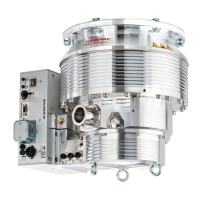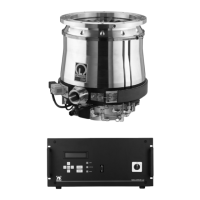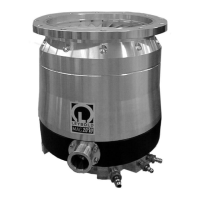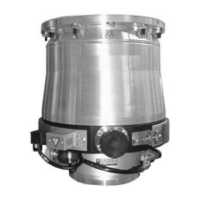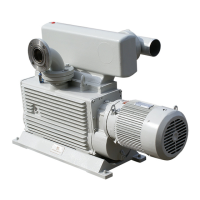Operation
41300324726_002_C0 - 10/2016 - © Leybold
4.6 Venting
Vent the turbomolecular pump each time it is shut down, in order to prevent
any return diffusion of oil vapors out of the forevacuum line and into the high-
vacuum side.
Druck
Zeit
10
-2
10
-1
1
10
10
2
10
3
0102030405060708090 100
Max. Vorvakuumdruck
Max. Hochvakuumdruck
mbar
s
Fig. 4.1 Pressure rise curve for safe venting
Time
Pressure
Max. forevacuum pressure
Max. high-vacuum pressure
Venting Methods
There are three different methods of venting the turbomolecular pump.
In the case processes requiring a purge gas, the pump must be vented via
the purge gas and venting valve when shutting the pump down.
When additionally venting the vacuum chamber, the venting function of the
purge gas and venting valve must be opened before opening the chamber
valve. This will ensure the presence of a higher pressure in the area of the
bearings compared to the remaining vacuum area. This will prevent particles,
dust or aggressive gases from being forced through the bearings into the not
yet vented motor chamber of the pump.
Cautious venting of the pump is possible from the high vacuum side, since
here the bearing forces will be lowest. When doing so, no free jet of gas must
be allowed to form on the rotor so as to avoid exposing the rotor to addition-
al forces.
When venting the pump through its foreline connection, neither oil nor parti-
cles may be entrained in the gas flow from the forevacuum side into the
pump.
Purge gas and venting valve
High vacuum side
Foreline connection
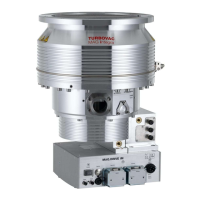
